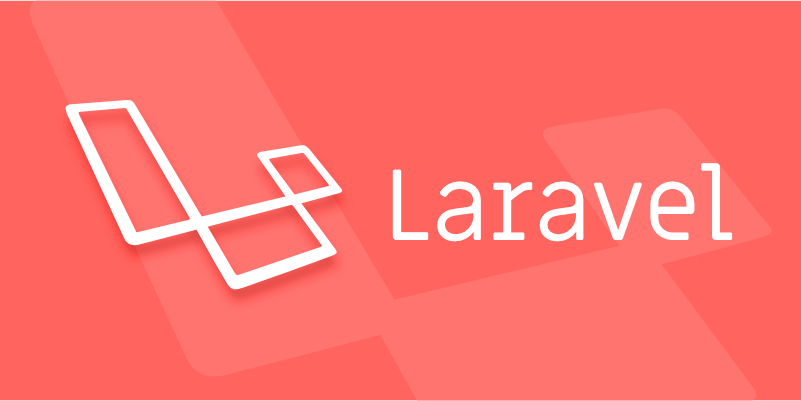How to implement a content management system (CMS) with Laravel?
Aug 03, 2025 pm 12:26 PMInstall Laravel and set up authentication using Breeze or Jetstream. 2. Create models and migrations for core content like Post with fields for title, slug, body, and user relationship. 3. Build an admin controller with CRUD operations for managing posts. 4. Design Blade views for the admin panel to list, create, edit, and delete posts. 5. Implement authorization using Laravel policies to control access based on user roles. 6. Handle file uploads by storing media and creating symbolic links. 7. Set up public routes and controllers to display published content. 8. Extend functionality with categories, editors, caching, and search. A Laravel-based CMS is built step by step with full control over features and security, starting from basic content management and scaling with advanced modules, resulting in a fully functional and customizable system.

Implementing a content management system (CMS) with Laravel involves setting up a structured application that allows users to manage dynamic content—like pages, blog posts, media, and user roles—through a secure admin interface. Laravel’s robust features make it ideal for building a custom CMS. Here’s how to do it step by step.

1. Set Up Laravel and Basic Structure
Start by creating a new Laravel project and installing necessary dependencies:
composer create-project laravel/laravel my-cms cd my-cms
Install Laravel Breeze or Jetstream for authentication (recommended):

composer require laravel/breeze --dev php artisan breeze:install npm install && npm run dev php artisan migrate
This gives you login, registration, and password reset functionality out of the box.
2. Define Core Content Models and Migrations
Most CMS platforms need models like Page, Post, Category, Tag, and Media. Let’s create a basic Post model:

php artisan make:model Post -mf
Edit the migration to include essential fields:
// database/migrations/xxxx_create_posts_table.php
Schema::create('posts', function (Blueprint $table) {
$table->id();
$table->string('title');
$table->string('slug')->unique();
$table->text('excerpt')->nullable();
$table->longText('body');
$table->boolean('is_published')->default(false);
$table->timestamp('published_at')->nullable();
$table->foreignId('user_id')->constrained()->onDelete('cascade');
$table->timestamps();
});Run the migration:
php artisan migrate
Then define the relationship in the User model:
// app/Models/User.php
public function posts()
{
return $this->hasMany(Post::class);
}And in the Post model:
// app/Models/Post.php
use Illuminate\Support\Str;
protected static function boot()
{
parent::boot();
static::saving(function ($post) {
$post->slug = Str::slug($post->title);
});
}3. Create Admin Panel and Controllers
Generate a controller for managing posts:
php artisan make:controller Admin/PostController --resource
Set up routes in routes/web.php:
use App\Http\Controllers\Admin\PostController;
Route::middleware(['auth'])->prefix('admin')->group(function () {
Route::resource('posts', PostController::class);
});Now implement basic CRUD methods in PostController:
// app/Http/Controllers/Admin/PostController.php
public function index()
{
$posts = Post::with('user')->latest()->paginate(10);
return view('admin.posts.index', compact('posts'));
}
public function create()
{
return view('admin.posts.create');
}
public function store(Request $request)
{
$request->validate([
'title' => 'required|max:255',
'body' => 'required',
'is_published' => 'boolean'
]);
$post = new Post($request->only('title', 'excerpt', 'body', 'is_published'));
$post->user_id = auth()->id();
if ($request->is_published) {
$post->published_at = now();
}
$post->save();
return redirect()->route('admin.posts.index')->with('success', 'Post created.');
}Add similar logic for edit, update, and destroy.
4. Build Admin Views with Blade
Create Blade templates in resources/views/admin/posts/:
index.blade.php– list all postscreate.blade.php– form to create a new postedit.blade.php– edit existing post
Example form field in create/edit:
<form action="{{ route('admin.posts.store') }}" method="POST">
@csrf
<input type="text" name="title" placeholder="Title" required>
<textarea name="body" rows="10" placeholder="Content" required></textarea>
<label><input type="checkbox" name="is_published"> Publish Now</label>
<button type="submit">Save</button>
</form>Use Laravel’s @error directives for validation feedback.
5. Add Authorization and Roles (Optional)
For multi-user roles (admin, editor, author), use Laravel’s policies:
php artisan make:policy PostPolicy --model=Post
Register the policy in AuthServiceProvider:
protected $policies = [
Post::class => PostPolicy::class,
];Then define abilities in PostPolicy.php:
public function update(User $user, Post $post)
{
return $user->id === $post->user_id || $user->is_admin;
}Apply in controller:
public function edit(Post $post)
{
$this->authorize('update', $post);
return view('admin.posts.edit', compact('post'));
}6. Handle Media and File Uploads
To upload images or files with posts:
// In PostController@store
if ($request->hasFile('image')) {
$path = $request->file('image')->store('public/posts');
$post->image = str_replace('public/', 'storage/', $path);
}Make sure to run:
php artisan storage:link
And in .env, ensure APP_URL is correct for asset access.
7. Add SEO and Frontend Display
Create a public-facing route for viewing posts:
Route::get('/blog/{slug}', [PostController::class, 'show'])->name('blog.show');In the controller:
public function show($slug)
{
$post = Post::where('slug', $slug)->where('is_published', true)->firstOrFail();
return view('blog.show', compact('post'));
}Display content safely with !! or use a markdown parser like Parsedown.
8. Extend with Additional Features
You can expand your CMS by adding:
- Categories and tags (with many-to-many relationships)
- WYSIWYG editor (like TinyMCE or Trix)
- Caching for performance
- Search functionality using Scout
- Multi-language support via spatie/laravel-translatable
- Page builder using repeaters or JSON fields
Final Notes
Laravel doesn’t come with a built-in CMS, but its flexibility lets you build one tailored to your needs. For faster development, consider using packages like:
- October CMS – Laravel-based headless CMS
- Statamic – commercial Laravel CMS
- FusionCMS or AsgardCMS – modular Laravel CMS platforms
But if you want full control, building your own with Laravel is a solid approach.
Basically, start small with posts and users, secure access, and grow from there.
The above is the detailed content of How to implement a content management system (CMS) with Laravel?. For more information, please follow other related articles on the PHP Chinese website!

Hot AI Tools

Undress AI Tool
Undress images for free

Undresser.AI Undress
AI-powered app for creating realistic nude photos

AI Clothes Remover
Online AI tool for removing clothes from photos.

Clothoff.io
AI clothes remover

Video Face Swap
Swap faces in any video effortlessly with our completely free AI face swap tool!

Hot Article

Hot Tools

Notepad++7.3.1
Easy-to-use and free code editor

SublimeText3 Chinese version
Chinese version, very easy to use

Zend Studio 13.0.1
Powerful PHP integrated development environment

Dreamweaver CS6
Visual web development tools

SublimeText3 Mac version
God-level code editing software (SublimeText3)
 Working with pivot tables in Laravel Many-to-Many relationships
Jul 07, 2025 am 01:06 AM
Working with pivot tables in Laravel Many-to-Many relationships
Jul 07, 2025 am 01:06 AM
ToworkeffectivelywithpivottablesinLaravel,firstaccesspivotdatausingwithPivot()orwithTimestamps(),thenupdateentrieswithupdateExistingPivot(),managerelationshipsviadetach()andsync(),andusecustompivotmodelswhenneeded.1.UsewithPivot()toincludespecificcol
 Sending different types of notifications with Laravel
Jul 06, 2025 am 12:52 AM
Sending different types of notifications with Laravel
Jul 06, 2025 am 12:52 AM
Laravelprovidesacleanandflexiblewaytosendnotificationsviamultiplechannelslikeemail,SMS,in-appalerts,andpushnotifications.Youdefinenotificationchannelsinthevia()methodofanotificationclass,andimplementspecificmethodsliketoMail(),toDatabase(),ortoVonage
 Strategies for optimizing Laravel application performance
Jul 09, 2025 am 03:00 AM
Strategies for optimizing Laravel application performance
Jul 09, 2025 am 03:00 AM
Laravel performance optimization can improve application efficiency through four core directions. 1. Use the cache mechanism to reduce duplicate queries, store infrequently changing data through Cache::remember() and other methods to reduce database access frequency; 2. Optimize database from the model to query statements, avoid N 1 queries, specifying field queries, adding indexes, paging processing and reading and writing separation, and reduce bottlenecks; 3. Use time-consuming operations such as email sending and file exporting to queue asynchronous processing, use Supervisor to manage workers and set up retry mechanisms; 4. Use middleware and service providers reasonably to avoid complex logic and unnecessary initialization code, and delay loading of services to improve startup efficiency.
 Managing database state for testing in Laravel
Jul 13, 2025 am 03:08 AM
Managing database state for testing in Laravel
Jul 13, 2025 am 03:08 AM
Methods to manage database state in Laravel tests include using RefreshDatabase, selective seeding of data, careful use of transactions, and manual cleaning if necessary. 1. Use RefreshDatabasetrait to automatically migrate the database structure to ensure that each test is based on a clean database; 2. Use specific seeds to fill the necessary data and generate dynamic data in combination with the model factory; 3. Use DatabaseTransactionstrait to roll back the test changes, but pay attention to its limitations; 4. Manually truncate the table or reseed the database when it cannot be automatically cleaned. These methods are flexibly selected according to the type of test and environment to ensure the reliability and efficiency of the test.
 Choosing between Laravel Sanctum and Passport for API authentication
Jul 14, 2025 am 02:35 AM
Choosing between Laravel Sanctum and Passport for API authentication
Jul 14, 2025 am 02:35 AM
LaravelSanctum is suitable for simple, lightweight API certifications such as SPA or mobile applications, while Passport is suitable for scenarios where full OAuth2 functionality is required. 1. Sanctum provides token-based authentication, suitable for first-party clients; 2. Passport supports complex processes such as authorization codes and client credentials, suitable for third-party developers to access; 3. Sanctum installation and configuration are simpler and maintenance costs are low; 4. Passport functions are comprehensive but configuration is complex, suitable for platforms that require fine permission control. When selecting, you should determine whether the OAuth2 feature is required based on the project requirements.
 Implementing Database Transactions in Laravel?
Jul 08, 2025 am 01:02 AM
Implementing Database Transactions in Laravel?
Jul 08, 2025 am 01:02 AM
Laravel simplifies database transaction processing with built-in support. 1. Use the DB::transaction() method to automatically commit or rollback operations to ensure data integrity; 2. Support nested transactions and implement them through savepoints, but it is usually recommended to use a single transaction wrapper to avoid complexity; 3. Provide manual control methods such as beginTransaction(), commit() and rollBack(), suitable for scenarios that require more flexible processing; 4. Best practices include keeping transactions short, only using them when necessary, testing failures, and recording rollback information. Rationally choosing transaction management methods can help improve application reliability and performance.
 Handling HTTP Requests and Responses in Laravel.
Jul 16, 2025 am 03:21 AM
Handling HTTP Requests and Responses in Laravel.
Jul 16, 2025 am 03:21 AM
The core of handling HTTP requests and responses in Laravel is to master the acquisition of request data, response return and file upload. 1. When receiving request data, you can inject the Request instance through type prompts and use input() or magic methods to obtain fields, and combine validate() or form request classes for verification; 2. Return response supports strings, views, JSON, responses with status codes and headers and redirect operations; 3. When processing file uploads, you need to use the file() method and store() to store files. Before uploading, you should verify the file type and size, and the storage path can be saved to the database.
 Generating URLs for Named Routes in Laravel.
Jul 16, 2025 am 02:50 AM
Generating URLs for Named Routes in Laravel.
Jul 16, 2025 am 02:50 AM
The most common way to generate a named route in Laravel is to use the route() helper function, which automatically matches the path based on the route name and handles parameter binding. 1. Pass the route name and parameters in the controller or view, such as route('user.profile',['id'=>1]); 2. When multiple parameters, you only need to pass the array, and the order does not affect the matching, such as route('user.post.show',['id'=>1,'postId'=>10]); 3. Links can be directly embedded in the Blade template, such as viewing information; 4. When optional parameters are not provided, they are not displayed, such as route('user.post',






